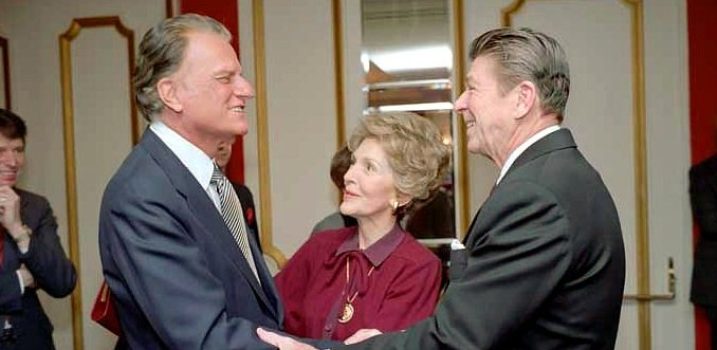
I was reading The New York Times yesterday when I came across a familiar name in the Obituary section: William Van Alstyne, a civil libertarian and longtime professor of law at Duke University, died Jan. 29. He was 84.
If you research the history of school prayer amendments, as I have done, Van Alstyne’s name tends to pop up. In the early 1980s, when President Ronald W. Reagan made a big push for a school prayer amendment, Van Alstyne was a vocal opponent – and helped us derail the dangerous measure.
Van Alstyne didn’t mince words. He once opined that the amendment would “install the first seeds of theocracy into our government institutions.”
That sounded hyperbolic to some, but Van Alstyne’s analysis was on solid ground. When Reagan introduced his school prayer amendment in 1982, it was accompanied by a fact sheet that said, “[S]tates and communities would be free to select prayers of their own choosing. They could choose prayers that have already been written, or they could compose their own prayers. If groups of people are to be permitted to pray, someone must have the power to determine the content of such prayers.”
Read that last line again. It’s not only an invitation for government officials to compose prayers but also to compel impressionable children and others to recite them in a public school system and in other public institutions. What if the prayers conflicted with what the child was being taught at home by his or her parents? Too bad! Reagan’s amendment didn’t contemplate protecting the vital right of conscience. That’s why Van Alstyne instinctively realized that allowing government to write prayers and compel children to recite them was indeed “creeping theocracy.”
Van Alstyne took an activist stance. On Nov. 7, 1982, he and fellow Duke law professor Walter Dellinger penned an op-ed for The Washington Post, headlined “Government Control Of Religion?” that eviscerated Reagan’s amendment. (The op-ed was reprinted in the February 1983 issue of Church & State.)
“Promoted as a measure that would simply ‘permit children to pray in schools,’ its actual effect would be awesomely different: It would empower government officials to compose officially approved devotional exercises and to require that these exercises be conducted regularly in public institutions,” Val Alstyne and Dellinger wrote.
The two went on to say, “Because it would wholly remove the subject of ‘group prayer in public institutions’ from the Constitution, the amendment would vest in every level of government the power to establish whatever particular religion can command a legislative majority. This could lead, over time, to a destructive competition among the more than 375 religions in the United States as each seeks to persuade bureaucrats and politicians to select the liturgy of its sect for regular use in public institutions.”
On March 20, 1984, after much political wrangling, Reagan’s prayer amendment reached the floor of the U.S. Senate. The final vote was 55-43; while it secured a majority, the proposal fell 11 votes short of the two-thirds needed to pass a constitutional amendment.
Americans United and a coalition of religious, secular and civil liberties groups had worked overtime to oppose the Reagan school prayer amendment. Shortly before the vote, AU sponsored a Washington, D.C., press conference featuring two women from Little Axe, Okla., who had been harassed and assaulted because they opposed inappropriate forms of school-sponsored religion in their children’s public school. By highlighting the women’s ordeal, Americans United sought to put a human face on the issue and debunk claims that official prayer in school is a harmless thing that just about everyone supports.
Events like that helped ensure the amendment’s defeat. But the penetrating analysis offered by Van Alstyne and others in legal and academic communities was essential as well.
William Van Alstyne never hesitated to speak his mind. If he thought core constitutional rights were at risk, he took action to protect them. We’ve all benefitted from that.
P.S. Opposing coercive, school-sponsored religion in public schools remains a crucial part of AU’s work, as our recent victroy in Bossier Parish, La., shows.
(Photo: President Ronald W. Reagan and First Lady Nancy Reagan greet evangelist Billy Graham at the National Prayer Breakfast, Feb. 5, 1981. White House photo)